
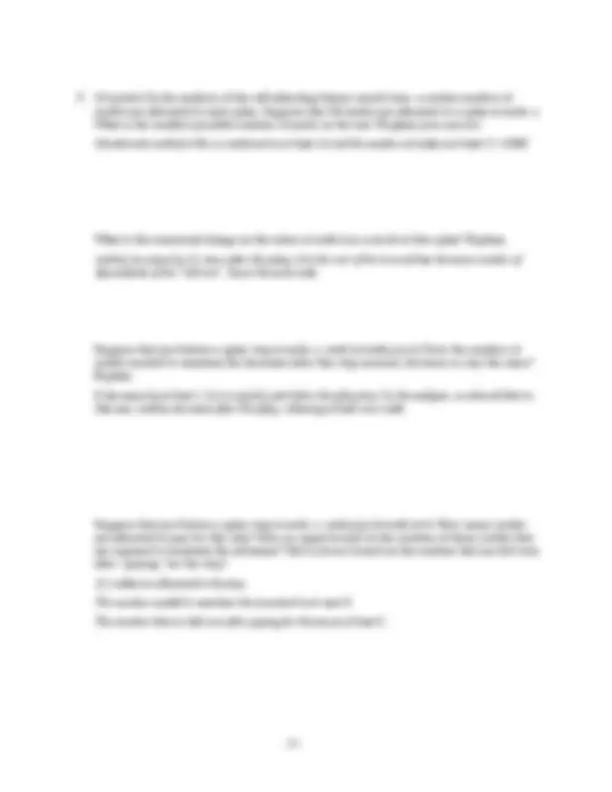
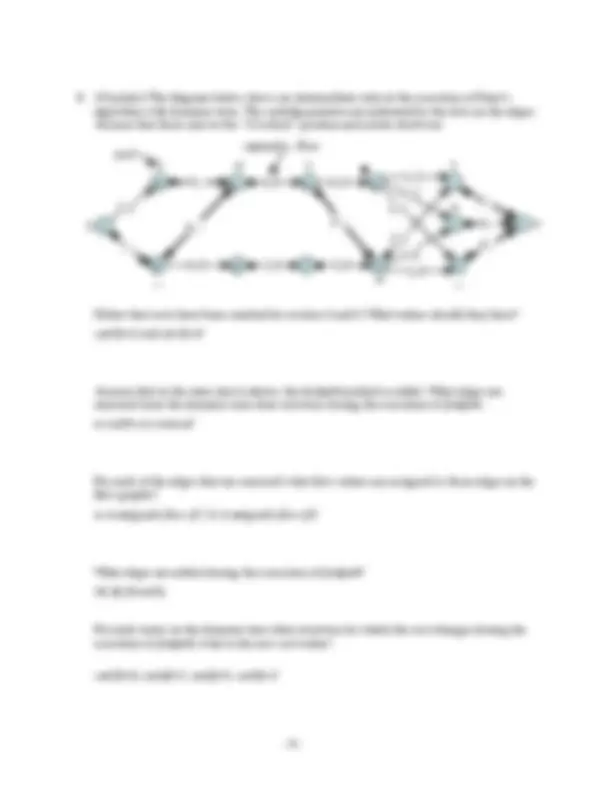
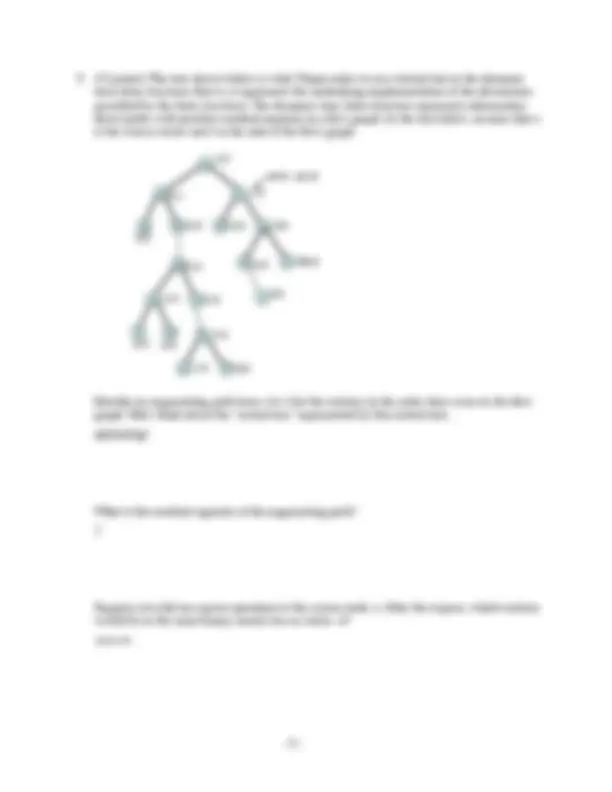
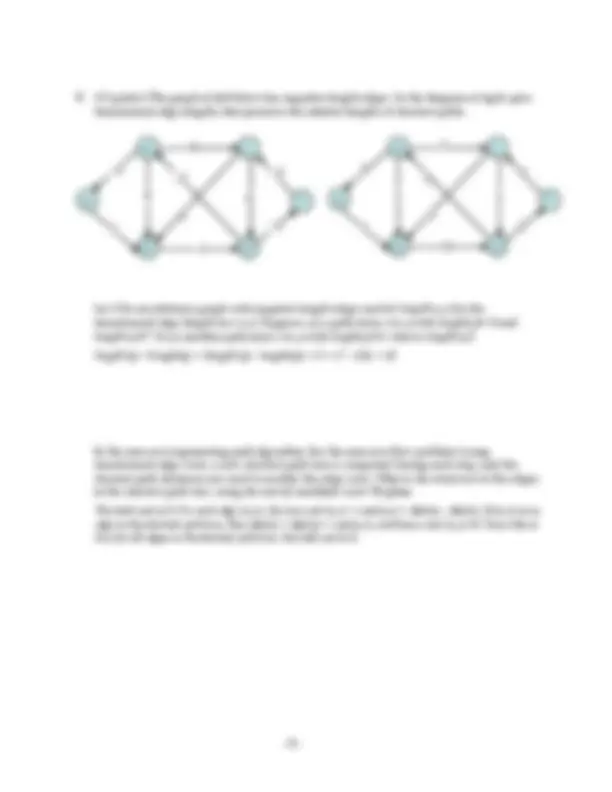
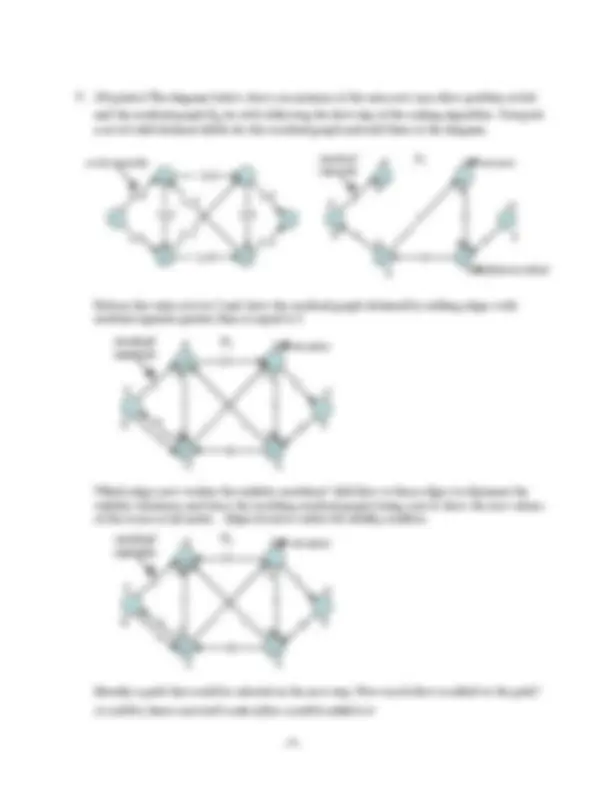


Study with the several resources on Docsity

Earn points by helping other students or get them with a premium plan


Prepare for your exams
Study with the several resources on Docsity

Earn points to download
Earn points by helping other students or get them with a premium plan
Community
Ask the community for help and clear up your study doubts
Discover the best universities in your country according to Docsity users
Free resources
Download our free guides on studying techniques, anxiety management strategies, and thesis advice from Docsity tutors
Main points of this past exam are: Shortest Path Version, Advanced Data Structures, Augmenting Path Algorithm, Residual Graph, Paths Sadt, Augmenting Path Algorithm, Shortest Augmenting, Augmenting Path, Intermediate State, Edmonds Algorithm
Typology: Exams
1 / 9

This page cannot be seen from the preview
Don't miss anything!






was defined to be the residual graph for the flow on the graph following the i - th
augmenting path step. In the flow graph below, assume that the first two steps of the
augmenting path algorithm select the paths sadt and scet.
Draw R 2
and label each vertex u with the value of level 2
( u ).
The shortest augmenting path algorithm selects the edges in the augmenting path from a
subset of the edges in R i
. In the example flow graph, which edges are in this set of eligible
edges for R 2
Edges sa, sc, ad, ab, cb, be, de, et are all eligible
execution of Edmonds algorithm for maximum size matching.
Identify three blossoms in the graph by drawing closed curves around them. Recall that one
blossom may be contained in another.
Write down the vertex sets defined by the partition data structure at this point in the
execution of the algorithm.
{a}, {b}, {c,d,e,h,i,j,k,o,p,x,w}, {g,m,s,n,t}, {u}, {v}
Mark the bridges of the blossoms with a B.
If edge { i,n } is processed next, an augmenting path is found. List the vertices in that
augmenting path.
a,b,h,c,d,j,e,k,x,w,p,o,i,n,t,s,m,g
B
B
B
algorithm with dynamic trees. The nextedge pointers are indicated by the dots on the edges.
Assume that these start at the “12-oclock” position and rotate clockwise.
Notice that costs have been omitted for vertices b and k. What values should they have?
cost(b)=2 and cost (k)=
Assume that in the state shown above, the findpath method is called. What edges are
removed from the dynamic trees data structure during the execution of findpath.
ac and bc are removed
For each of the edges that are removed what flow values are assigned to those edges in the
flow graphs?
ac is assigned a flow of 2, bc is assigned a flow of 4
What edges are added during the execution of findpath?
bd, df, fh and hj
For each vertex in the dynamic trees data structure for which the cost changes during the
execution of findpath , what is the new cost value?
cost(b)=4, cost(d)=2, cost(f)=3, cost(h)=
g
t
h
i
k
j
a e
b
c
d f
s
capacity, flow
cost
trees data structure (that is, it represents the underlying implementation of the abstraction
provided by the data structure). The dynamic trees data structure represents information
about paths with positive residual capacity in a flow graph. In the tree below, assume that s
is the source vertex and t is the sink of the flow graph.
Identify an augmenting path from s to t ; list the vertices in the order they occur in the flow
graph. Hint: think about the “actual tree” represented by this virtual tree.
skfnbadchgt
What is the residual capacity of the augmenting path?
Suppose you did an expose operation at the source node, s. After the expose, which vertices
would be in the same binary search tree as vertex m?
x,z,w,m
2,
! min ,! cost
b d
e c
a
0,
1,
0,0 0,0 9,
n
t
m
3,
2,
88,
i
s f
h
k
2,
3,
3,
1, 0,
p g
5,
x w
z
3,
2, 0,
potential function is used to account for the number of steps in which flow is added to an
edge, but the edge is not saturated. The potential function is defined to be the maximum of
the distance labels of the unbalanced vertices (that is, the vertices that have positive excess
flow). Suppose we have a graph with 100 vertices and 1000 edges. Give a numerical upper
bound on the value of the potential function.
P(u)<2n=200 for all u
In the analysis, we defined a phase to end when all the vertices on the queue at the start of
the phase have been processed. Explain why every phase that contains no relabeling
operation, causes the potential function to decrease.
Let X be the set of vertices that are on the queue at the start of the phase. Each vertex in X becomes
balanced during the phase (since all vertices that we cannot balance get relabeled). Hence, the only
vertices that are unbalanced at the end of the phase, are vertices which became unbalanced because we
pushed flow into them. Call this set of vertices Y. Every vertex u in Y has a smaller label than some
vertex in X (from which flow was pushed to u). Hence, the largest label for the vertices in Y must be
smaller than the largest label for the vertices in X. Hence, the potential function must decrease during
the phase.
Consider a step that adds flow to an edge ( u , v ) and saturates it. Can such a step cause the
potential function to increase? Why or why not?
No, because even if v becomes unbalanced, it’s label is smaller than that of u.
Consider a step that relabels a vertex. Can such a step cause the potential function to
decrease? Why or why not?
No, because a relabeling step can only increase the label of the vertex being relabeld, and does not
make any new vertex unbalanced.
Give an upper bound on the sum of the increases in the potential that could result from all
steps that relabel a vertex.
The total increase is <2n since the potential never decreases and cannot exceed 2n
transformed edge lengths that preserve the relative lengths of shortest paths.
Let G be an arbitrary graph with negative length edges and let length ’( u , v ) be the
transformed edge length for ( u , v ). Suppose p is a path from x to y with length ( p )= 3 and
length ’( p )=7. If q is another path from x to y with length ( q )=3, what is length ’( q )?
length’(q) = length(q) + (length’(p) - length(p)) = 3 + (7 - (-3)) = 13
In the min-cost augmenting path algorithm (for the min-cost flow problem) using
transformed edge costs, a new shortest path tree is computed during each step, and the
shortest path distances are used to modify the edge costs. What is the total cost of the edges
in the shortest path tree, using the newly modified costs? Explain.
The total cost is 0. For each edge (u,v), the new cost’(u,v) = cost(u,v) + dist(u) - dist(v). If (u,v) is an
edge in the shortest path tree, then dist(v) = dist(u) + cost(u,v), and hence cost’(u,v)=0. Since this is
true for all edges in the shortest path tree, the total cost is 0.